From the UC Blogosphere...
Your Fruit Trees Need Their Chill Time
Help and Advice from the Master Gardeners of Contra Costa's Help Desk
Client's Request: I am considering ordering on-line or buying locally some bare root fruit trees to plant this winter. In determining the appropriate variety, I'm reading that the number of “chill hours” is an important criteria in the selection. What are chill hours and where can I find the chill hours for my garden?
MGCC's Help Desk Advice: Chill hours are the cumulative number of hours of temperatures lower than 45OF that are required by deciduous fruit and nut trees for fruit production. The hours are tracked during the traditional dormant season, measured from November 1 to February 28/29.
Available Data: The University of California (UC) provides cumulative chill hours, current year and historical, for more than 100 locations throughout the state. The data is collected from UC's CIMIS (California Irrigation Management Information System) weather stations. There are now 4 Cimis weather station located in Contra Costa County – Brentwood, Concord, Moraga, and the relatively recent installation in El Cerrito. The former Oakland Hills CIMIS site and the current Pleasanton CIMIS site, both in Alameda County, are also provided below for possible interpolation.
Average and the range of chill hours for the last 14 years from the CIMIS active sites in Contra Costa County are below. You can obtain the original data yourself at the UC website: http://fruitsandnuts.ucdavis.edu/Weather_Services/chilling_accumulation_models/Chill_Calculators/?type=research.
|
Contra Costa County |
Average of and |
|
Brentwood (#47) |
818 (234 to 1066) |
|
Concord (#170) |
930 (679 to 1152 |
|
El Cerrito (#213) |
191 (132 to 250 |
|
Moraga (#178) |
1030 (891 to 1226) |
|
Oakland Foothills |
560 (560) |
|
Pleasanton (#191) |
881 (656 to 1217) |
Notes:
Brentwood: only 12 of 14 years reporting;
Concord: 14 of 14 years reporting
El Cerrito: only 2 of 14 years available (only several years in operation)
Moraga: 13 of 14 years reporting
…Alameda County CIMIS for use as possible interpolation…
Oakland Hills: ~10 years data from previous report; data now not readily available
Pleasanton: 11 of 14 years reporting;
Note: if you are really interested in the weather and climate data closer to you than the current 4 Contra Costa CIMIS stations, there are many other sources of data available on the web (http://bit.ly/1PyM1N3). However, much of the data aren't of the length of time of CIMIS and CIMIS has already done the tedious hour-by-hour calculations, but I'm sure there is/are somebody out there with enough computer skills to do it… and maybe they could share their expertise.
Why Are Chill Hours Important? During the fall season, shortening day length and cooler temperatures stimulate a tree to produce growth inhibitor hormones that stop it from growing. It is these hormones that keep a tree in dormancy during the winter months. Dormancy is broken when sufficient cold temperatures break down the growth inhibitors within the tree. The simplest model uses a specific number of cumulative hours of chill (temperatures lower than 45oF) required to break dormancy. Once the appropriate number of chill hours has been achieved, and only after trees are exposed to longer daylight hours and warm enough temperatures for natural growth processes to begin, will active growth resume in the spring. There are also more sophisticated chill hour models that attempt to take into account warm spells during the winter, but for purposes of home garden fruit trees the model described should be adequate.
Effects of Insufficient Chill: With insufficient chill, trees will leaf out late in the season, blossoming can be prolonged, buds may deteriorate and/or drop, and few if any flowers are produced. Without flowers, there is no fruit. Both the absolute number and the distribution of chill hours have an impact. Periods of a few days to a week or more of mild weather may offset or reduce the effectiveness of accompanying periods of good chilling weather. Greater seasonal totals are usually necessary when there is prolonged interruption of cool weather.
Chill Hour Requirements: The number of chill hours required varies by the type and variety of fruit or nut. In order to assure the tree you plant is appropriate for your area's environmental conditions, you should know at least the average chill hours in your area as well as the chill hours required for the specific fruit or nut tree you wish to plant. For general information on the chilling requirement for various fruit and nut trees you can go to the UC website: http://homeorchard.ucdavis.edu/The_Big_Picture/Tree_Selection/#chill.
Fruit Tree Selection: For information on fruit tree varieties for the home garden, including low chill varieties (varieties requiring less than 300 hours of temperatures lower than 45OF to break dormancy), go to the University of California free publication “Growing Temperate Tree Fruit and Nut Crops in the Home Garden” at http://homeorchard.ucdavis.edu/varieties.pdf. You may also find more information on fruit tree varieties and required chill hours of interest on the web sites of commercial wholesale and mail-order web nurseries.
Editor's Note: This response is an updated and edited version of a MGCC article by Emma Connery that was originally published in the January 11, 2015, Contra Costa Times. Any errors are the responsibility of the HOrT COCO editor.
Help Desk of the UC Master Gardeners of Contra Costa County
Note: The UC Master Gardeners of Contra Costa's Help Desk is available year-round to answer your gardening questions. Except for a few holidays, we're open every week, Monday through Thursday for walk-ins from 9:00 am to Noon at 75 Santa Barbara Road, 2d Floor, Pleasant Hill, CA 94523. We can also be reached via telephone: (925) 646-6586, email: ccmg@ucanr.edu, or on the web at http://ccmg.ucanr.edu/Ask_Us/ MGCC Blogs can be found at http://ccmg.ucanr.edu/HortCoCo/ You can also subscribe to the Blog.
New Master Gardeners!
Become A “Master Of Gardening” By Lee Oliphant UCCE Master Gardener When...
Daily Life For Master Gardeners
Mosquito Bites By Andrea Peck Just when you thought it was safe to leave water in the open, along comes a...
The Place to Be Oct. 24: UC Davis Arboretum Plant Sale
So, you're looking for some host plants to attract butterflies, like monarchs and pipevine swallowtails? You're yearning to...
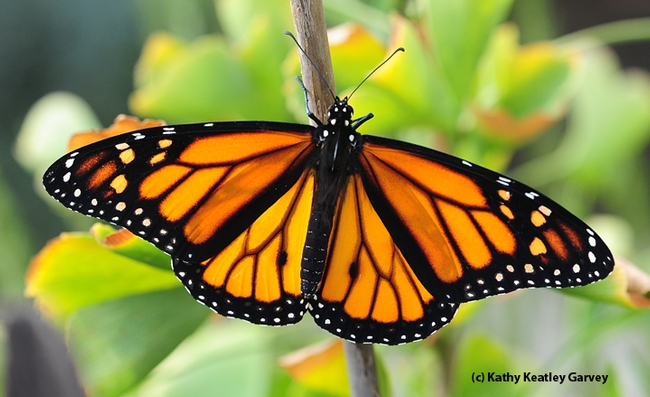
A newly released (Oct. 23) male monarch butterfly lands on a ginkgo tree. (Photo by Kathy Keatley Garvey)
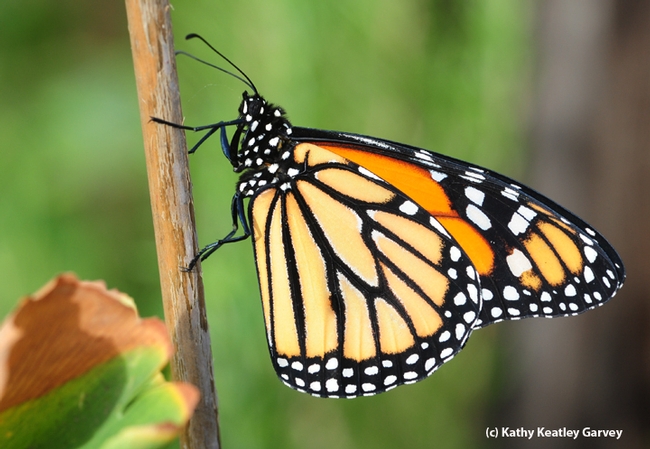
Male monarch soaks up sunshine. (Photo by Kathy Keatley Garvey)
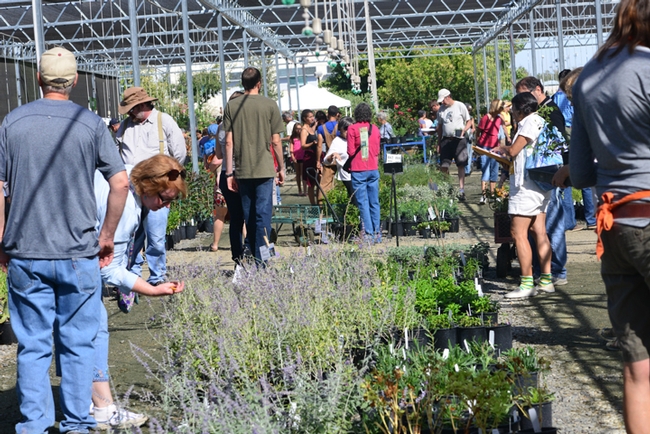
This was the scene at a recent UC Davis Arboretum Plant Sale. (Photo by Kathy Keatley Garvey)
Share and Share Alike...
Honey bees were all over the Japanese anemone (Anemone hupehensis) on Monday, Oct. 19 at the Luther Burbank Home...
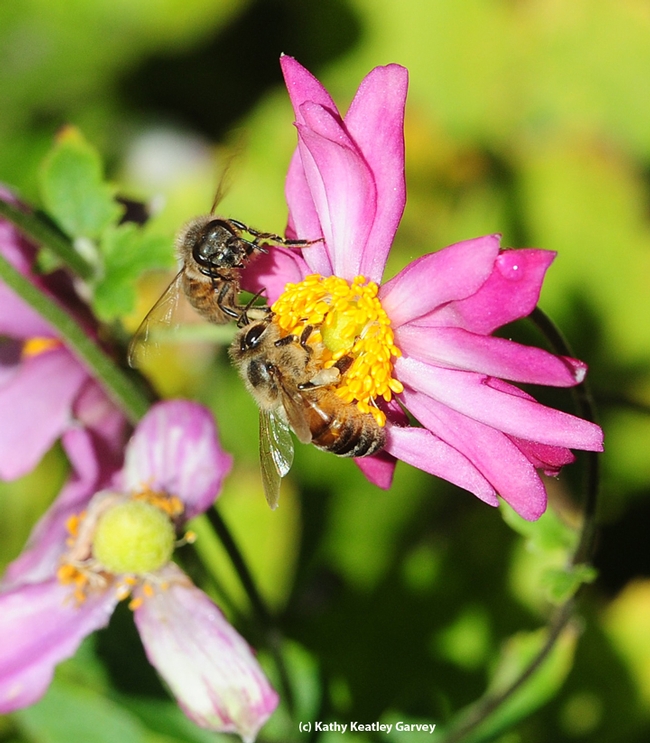
Two honey bees compete for floral resources as they forage on a Japanese anemone in the Luther Burbank gardens, Santa Rosa. (Photo by Kathy Keatley Garvey)
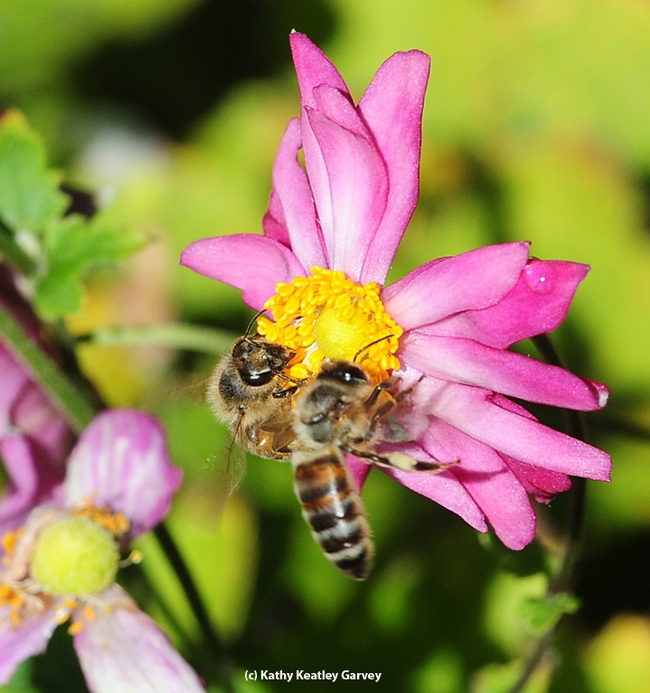
This flower is mine. No, it's mine! (Photo by Kathy Keatley Garvey)
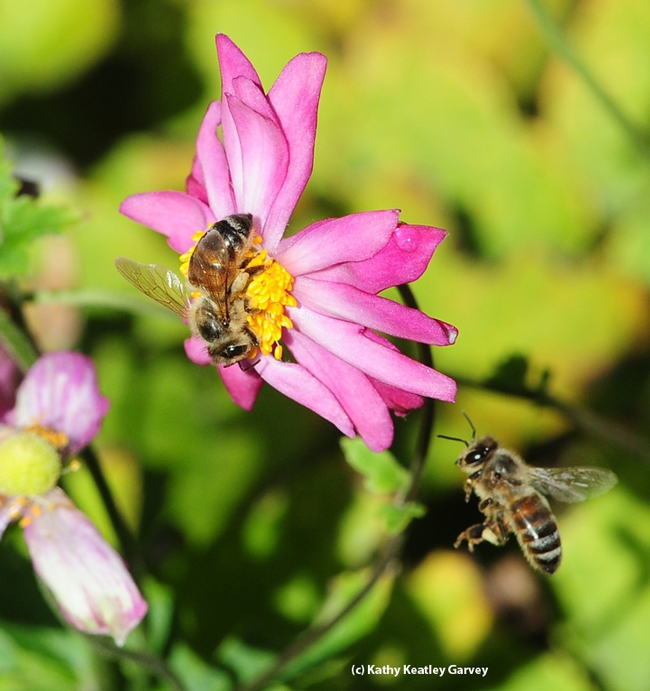
After one honey bee leaves, another returns. (Photo by Kathy Keatley Garvey)
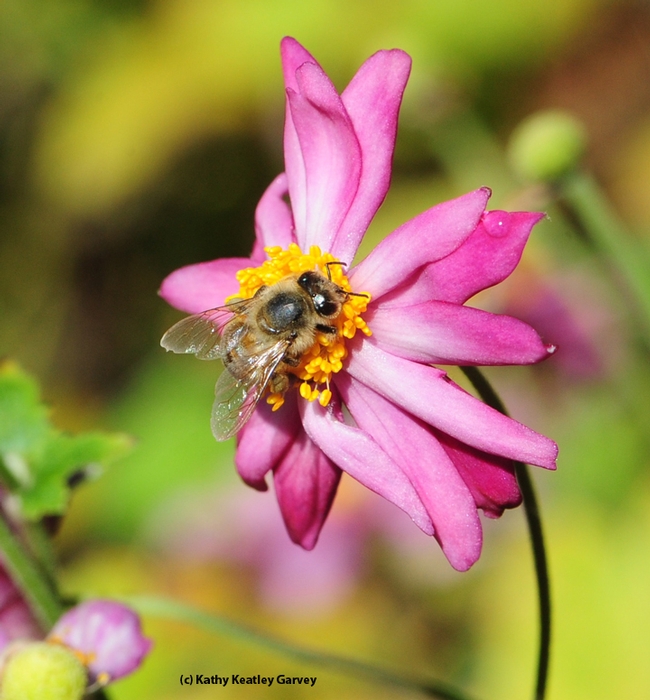
Ah, alone at last! (Photo by Kathy Keatley Garvey)








